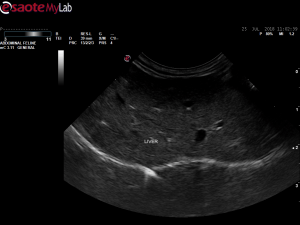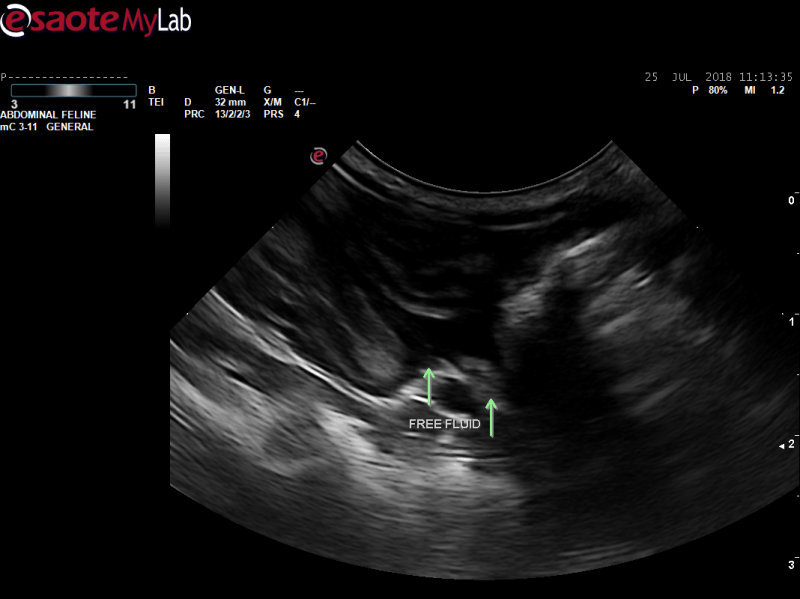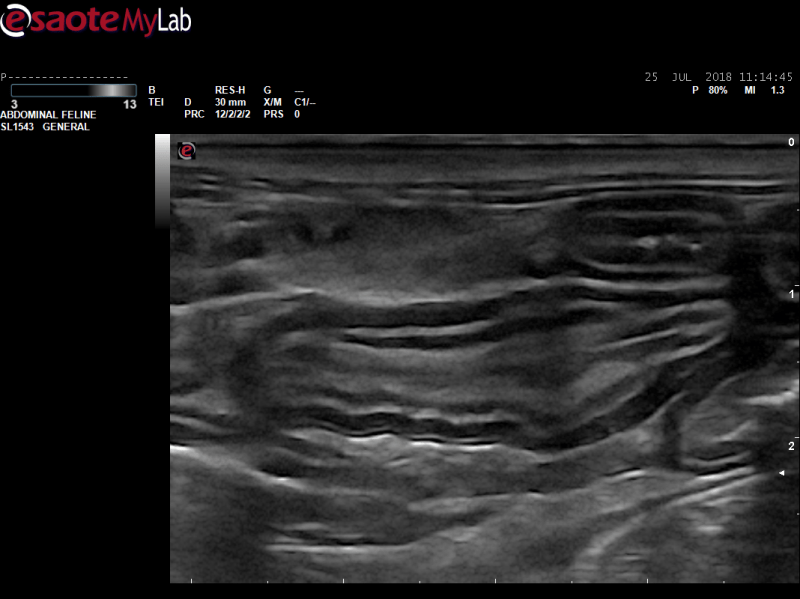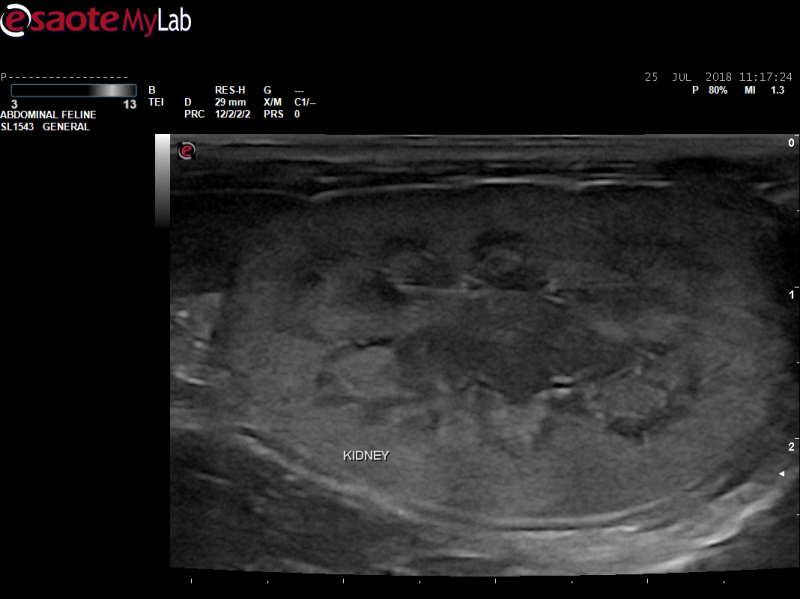- 13 year old cat with weight loss and more recently decreased appetite
- Bloods and urine unremarkable
- I think the small intestines are mildly thickened and the mesenteric LNs moderately enlarged
- There is a small volume of free abdominal fluid – what do you think is causing this?
- The heart is normal, the protein levels are normal. Could it be from portal hypertension?
- 13 year old cat with weight loss and more recently decreased appetite
- Bloods and urine unremarkable
- I think the small intestines are mildly thickened and the mesenteric LNs moderately enlarged
- There is a small volume of free abdominal fluid – what do you think is causing this?
- The heart is normal, the protein levels are normal. Could it be from portal hypertension?




Comments
Diffuse sm int thickening
Diffuse sm int thickening hypertrophied muscularis but no detail loss. LN have reactive pattern (longer than wide) but need full thickness sx bx to know if LSA is there or not. Wasting cats can have slight free fluid as well as LN congestion of lymphatics will do the same.
That’s great to know about
That’s great to know about the fluid, thanks Eric.
Just for fun, take a look at
Just for fun, take a look at your image of the jejunum. The muscularis layering is separated into two distinct anechoic layers by a thin hyperechoic line. This is the anatomical separation between the circular and longitudinal muscling . In IBD and SCL, the layering hypertrophy is from the longitudinal muscle as it struggles to form effective peristaltic wave through diseased parts of the jejunum ( infiltrates ). In your case it is normal. This rules out IBD and SCL of the intestines at this location. When you have a kidney like this you may also want to measure the RI ( resistive Index) to see if it is diseased.
Wow Bob this is news to me on
Wow Bob this is news to me on the muscle layering… have any more info?
Also on the RI index I have yet to hear anyone give me any solid reliable value in this test no I don;t apply it but things may have changed since I last looked into it.
Whats the latest in bullet point on RI index and applications ?
OK Eric you got me thinking
OK Eric you got me thinking again. I believe that I want to word things a little differently. Lets start with the first image.
Image 1 ; the image is similar to the one on the post where you see the muscularis separated into two distinct zones.
Image 2 ; the longitudinal and circular muscle layers are labelled.
Image 3 ; a beautiful histology image comparing a normal muscularis to that of one that is hypertrophied. Note that it would have been impossible to distinguish the layering on this normal patient with the resolution that we have today. So that is the part that has got me thinking a little more. Why are we seeing it in these select patients? So maybe my answer was inaccurate. Maybe we are seeing it because there is some degree of hypertrophy making the visual sonographic distinction possible or is it simply that they are giving us an extraordinary scan. MAybe it is none of the above as these are only my own observations. Trying to think out of the box when histo isn’t always available to us.
Image 4; One thing that I like to look at is the ratio between the thickness of the sub-mucosa/ muscularis and/serosal layering. They are often very close to each other in a normal patient.
Image 5; in IBD or lymphoma the ration is distorted when comparing to the submucosa. In IBD I also often find the mucosal layering to be hyperechoic as well.
So maybe I jumped the gun when saying that IBD was absent. My impression is that in most of the loops of bowel seen here the ratios are acceptable. The real question is why is it that we can see the separation in the layering. Is it that the patient is really giving excellent images or is there some degree of hypertrophy happening? With IBD or lymphoma the mucosa layering becomes more rigid as the mucosa changes. There must be a concurrent increase in the strenght of the contractions to ensure that digested food is moving. This can only be done through hypertrophy of the muscles themselves.
Since the outer layering is responsible for the peristaltic contractions, we need to see a change in size here. Obviously the segmental contractions( circular muscling) have to increase as well or else everything would shoot out the back end in no time. So my corrected answer is better when saying that both layers hypertrophy but the degree of which they do depends on how much the mucosal layering is affected or infiltrated. There is a direct cause and effect. It might be worth pointing out that we are seeing it over only a very small lenght of the jejunum in the patient posted here. It is not generalised making the claim that IBD is less likely still valid in my opinion. Yea, I know, I am way out there alone on a hill.
It is a topic to discuss while giving us a good reason to share a excellent bottle of wine when you are back up this way again.
Thats just beyond nerdy
Thats just beyond nerdy awesome Bob! You have outdone yourself:)